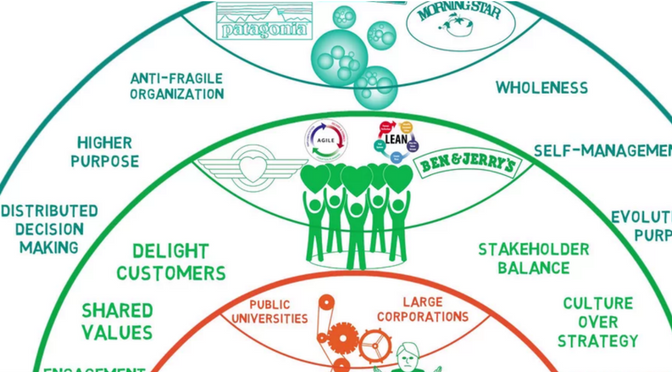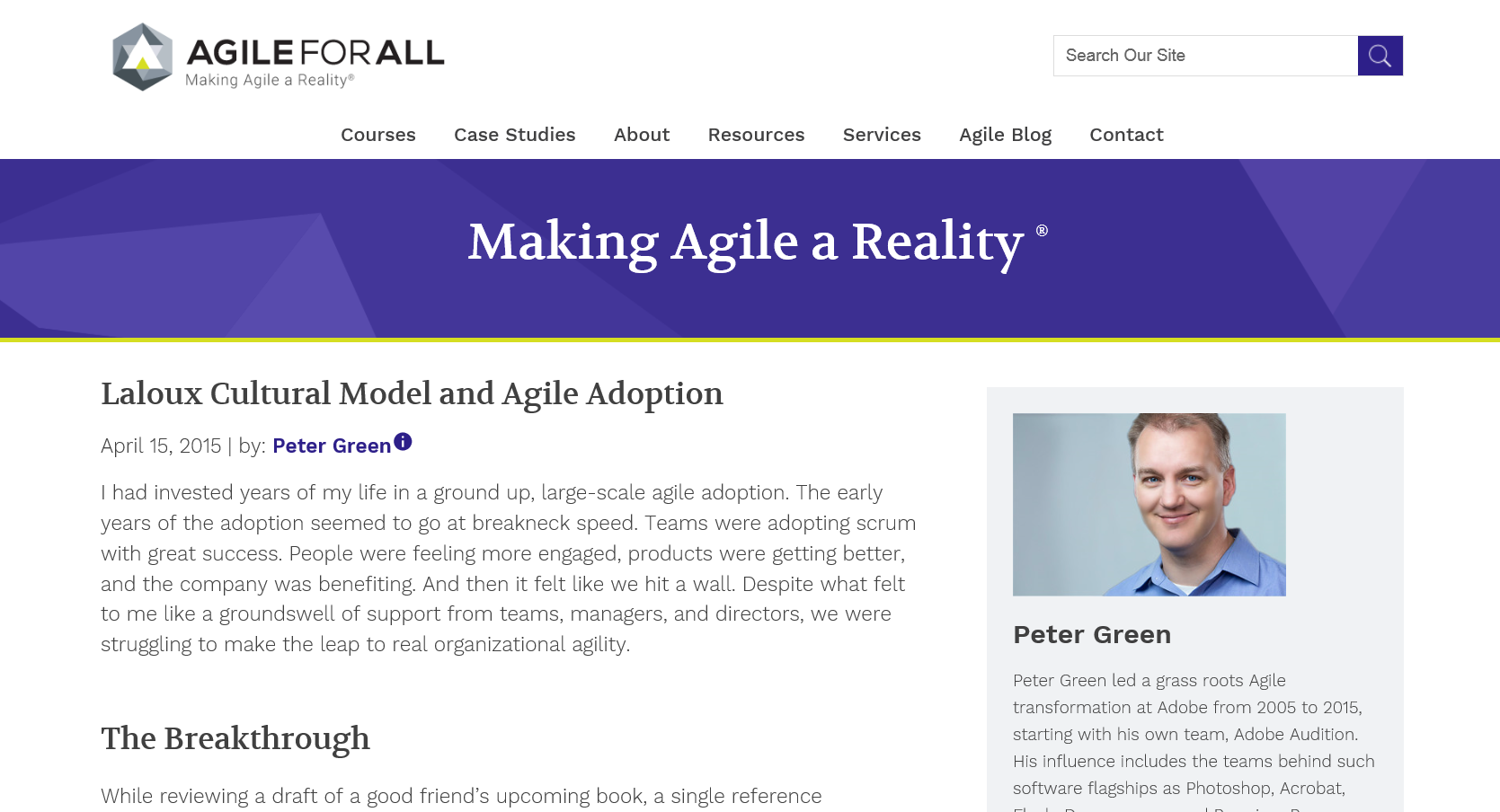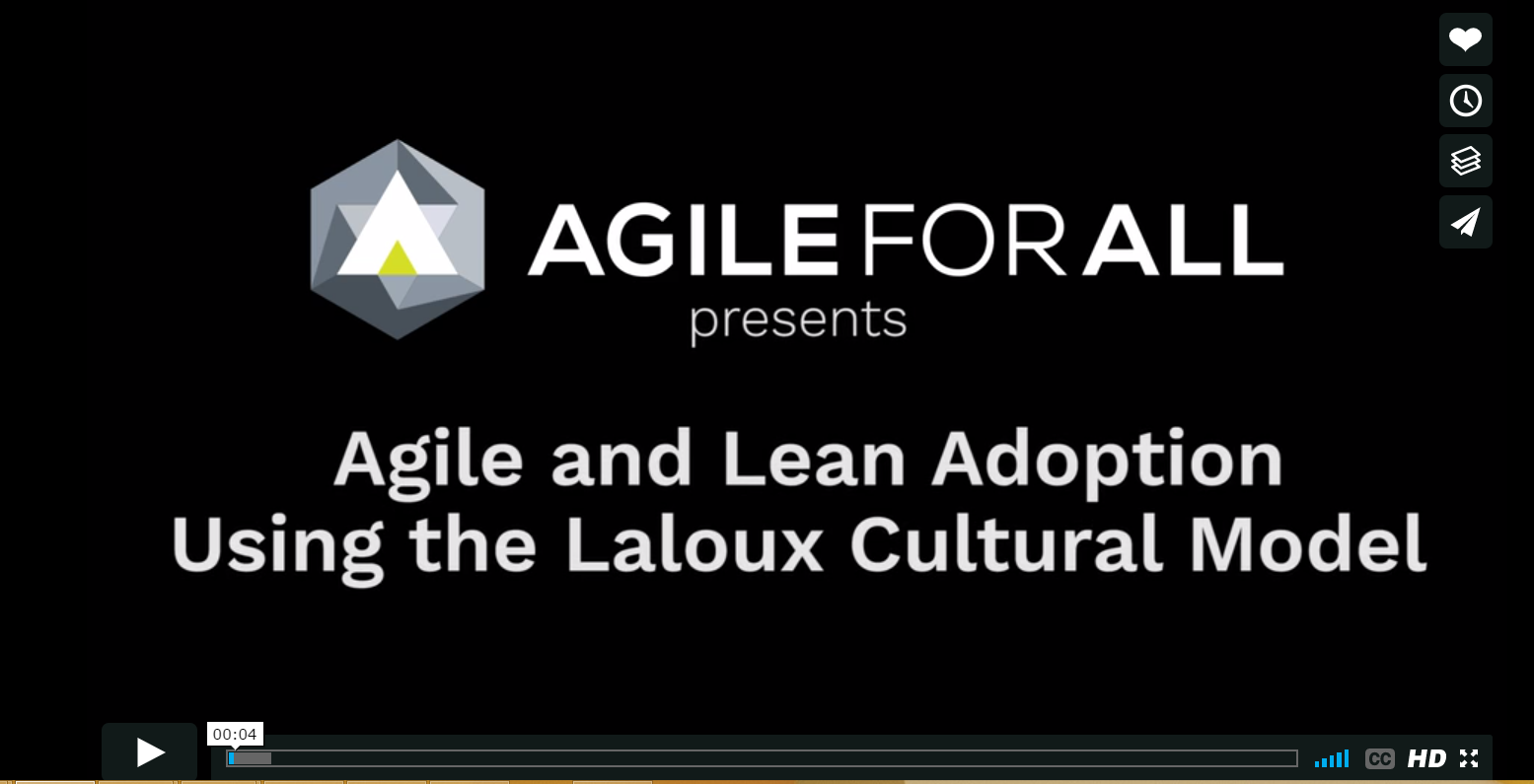I have been so impressed by and proud of the energy and enthusiasm with which the new Digital service and latterly the core IT service at Stockport Council have adopted agile as a way of working over the past two years.
Over the past few months I have been reflecting on where we are at with our agility and how being agile is more than a set of processes. To me the most powerful and transformational aspect of agile is its ability to support the creation of a culture with communicating, learning and improvement at its heart.
Unfortunately this is by no means easy and for many reasons people find change hard, even if it has the potential to reduce problems and lead to improvements. People often feel that they need to dismiss and leave behind everything they have valued so far, rather than adding to or evolving their technical and personal skills set. Additionally it is often easy for people to feel that their agile journey is complete when agile processes have been adopted.
On a recent Agile Delivery Manager course with GDS we were shown a video which illustrated the concepts of Frederic Laloux’s book ‘Reinventing Organizations’. I think this captures well the management ideas and styles that have evolved over the centuries and shows how individuals, teams and organisations can flexibly build on their existing knowledge to create the improvements they want.
For those of you reading this at Stockport Council we will be focusing over the coming months on building on the existing learning and improvement culture.
For those of you elsewhere I found this a useful starting point to discussing cultural change and where we go next with our services here in Stockport – I hope you find it interesting and of use too.
This blog first appeared as Agile for all – Making Agile a Reality on April 15, 2015
Laloux Cultural Model and Agile Adoption
By Peter Green
I had invested years of my life in a ground up, large-scale agile adoption. The early years of the adoption seemed to go at breakneck speed. Teams were adopting scrum with great success. People were feeling more engaged, products were getting better, and the company was benefiting. And then it felt like we hit a wall. Despite what felt to me like a groundswell of support from teams, managers, and directors, we were struggling to make the leap to real organizational agility.
The Breakthrough
While reviewing a draft of a good friend’s upcoming book, a single reference leaped off the page:
“There is … evidence that the developmental stage of the CEO determines the success of large-scale transformation programs.” (Tolbert, cited by Laloux, 2014)
I immediately bought and read Frederic Laloux’s book Reinventing Organizations, which provides a comprehensive overview of how humans have organized in groups over the centuries. The prevailing perspective today (what Laloux labels “orange”) seemed to describe my organization in an almost clairvoyant way. It helped me make sense of what my organization valued the most, how I could continue to be effective in my role as agile transformation leader, and what was likely possible given our cultural values. Keep reading to learn more…
Laloux’s Culture Model
I created the following video overview of Laloux’s cultural model and how it applies to Agile adoption in various types of organizations. It’s kind of a whirlwind tour, but I wanted to cover the basics in as succinct a way as possible. Feel free to pause and ponder as you digest the information.
The Rest of the Story…
Did one of the descriptions/colors stick out to you as the prevailing perspective at your organization? How about for you personally? My story takes an interesting twist after reading Laloux’s book. The prevailing perspective at the executive level seemed firmly rooted in Orange. I felt like I was somewhere between green and teal, personally. The difference in what I valued the most, and what the organization valued most, helped me understand why I had been so frustrated with the wall it seemed we had reached at the organizational level.
For me, it seemed I had three options:
- Acknowledge the value in an Orange perspective (there is value in every perspective), and work hard to help my organization be a shining example of Orange at its most vibrant.
- Seek out leaders with a Green perspective and work with them to try to expand the influence of Green values in the organization.
- Leave the organization and seek out Green or Teal organizations where I could grow personally at a faster pace.
Option one had been my journey for the first several years of my work leading our agile transformation. Option two had been my approach for the previous 18 months, but seemed to stall out when we needed executive level support for the types of changes required for a vertical transformation from Orange to Green. For option two, it felt like a waiting game – I could work with Green leaders in the hopes that at some point, the current CEO would either evolve personally, or, as happens frequently in large organizations, a new CEO would eventually come along, and all of the Green level cultural work would be unlocked and begin to flourish. This felt like a crapshoot as to what perspective that new CEO might have, and how long it might be before such a change might occur.
This left me with Option three, and that’s the option I took. While I think I could have provided value helping the organization be the best version of Orange it could, for my own personal growth, I really wanted to advance what’s possible and see how I can add value in a Green or Teal organization. I joined Agile for All knowing that they had been doing some really cool work with organizations adopting a Green/Teal set of practices, and I’m excited to see where we can go with such an approach.
So Now What?
First of all, definitely check out Laloux’s book. He provides fantastic details of how Teal organizations do awesome things.
If you are in a predominantly Amber or Orange organization, we’ve been there! We’ve seen Agile help these organizations get better at what they care about most, be that stability and predictability (Amber), or innovation and competitive advantage (Orange). An Agile mindset and practices will help achieve awesome results, and in a way that is more engaging and fulfilling for the people doing the work.
If you are in a predominantly Green or even a Teal organization, or one interested in moving in that direction, please get in touch! We’d love to hear about how it’s working for you. Whether we can help you out or not, we want to learn more about and help connect organizations taking this approach.
No matter your organization’s primary perspective, if you are interested in learning more about deep, long-lasting organizational transformation then let’s talk! Email me at peter.green@agileforall.com.



